Service hotline
+86 0755-83975897
Release date:2021-12-28Author source:KinghelmViews:678
01 Overview
Mobile communication technology has now evolved to the fifth generation (5G). Throughout its development history, 2G/3G has achieved basic mobile connectivity, while 4G, the most widely deployed, has brought huge data throughput through the popularization of smart terminals. Changed the way of life of users. 5G has attracted much attention even before it is fully commercialized. Its goal is not only to improve the service experience of traditional users, but also to combine mobile communications with vertical industries to greatly expand the field of mobile communications services. Although 5G is still in the initial stage of deployment globally, and the cooperation with vertical industries has just begun, but in the future, with the continuous maturity of deployment and business, it will definitely bring prosperity to the mobile communication market, accelerate the development of various industries and even the entire The digitalization of society.
Although the system indicators and capabilities of 5G have been greatly improved, and the application scenarios have gradually diversified, there are still limitations. Looking into the future, there is still a huge driving force for the continuous evolution of mobile communication networks. On the one hand, it is driven by emerging technologies, such as artificial intelligence, blockchain, cloud computing and other ICT technologies, as well as new materials, antennas and other processes. On the other hand, due to the continuous evolution of demand, with the development of diversified terminals and the improvement of the digital level of various industries, services such as holography, immersive XR, tactile Internet, and smart factories have been proposed, which not only require speed, delay, The increase in traditional performance indicators such as the number of connections and coverage will also bring demands on new dimensions such as perception, positioning, and security. Therefore, research on the vision, demand and technology of the next generation of mobile communication is gradually carried out. Due to the huge changes and added economic value brought by 5G to the society, the world's competitive countries and industrial chains attach great importance to mobile communication technology, not only Major standards organizations, academia, and even many national institutions and industries have launched pre-researches, aiming to have a mature technology system in the next decade, 2030, to meet new business needs and improve their own competitiveness.
For the next generation of mobile communication, namely 6G system, this paper combs the research background and related progress of major global standards organizations, regional and national organizations, and university research institutions, and analyzes the current potential wireless side and network side technology directions and the technologies they bring. Advantages, and finally summarizes the progress of 6G, and puts forward thinking on the vision and overall development direction of 6G.
02Global 6G research status
2.1 International and regional organizations
2.1.1 International Telecommunication Union (ITU)
Study Group 13 (ITU-T SG13) of the Telecommunication Standardization Sector under the International Telecommunication Union is dedicated to future network research, and established the NET-2030 Network Focus Group in July 2018, aiming to explore networks for 2030 and beyond service requirements. The focus group consists of 3 subgroups, including application scenarios and requirements, network services and technologies, and architecture and infrastructure, and released 2 white papers in 2019, focusing on application scenarios and new service capabilities of the 2030 network respectively, and proposed holographic, A variety of new scenarios such as tactile Internet, as well as the services that need the most attention in the current network gap and future networks.
In addition, the Radiocommunication Sector 5D Working Group (ITU-R WP5D) under the ITU launched research work for 2030 and beyond (6G) at a meeting held in Geneva, Switzerland in February 2020. The meeting formed a preliminary 6G research schedule, including important planning nodes such as future technology trend research reports and future technology vision proposals. At this meeting, ITU started the writing of the "Future Technology Trend Report", which is scheduled to be completed in June 2022. The report describes the technical evolution direction of the IMT system after 5G, including IMT evolution technology, high spectral efficiency technology and deployment. In addition, it is planned to launch the "Future Technology Vision Proposal" in the first half of 2021 and complete it by June 2023. This Recommendation contains the overall goals of the IMT system for 2030 and the future, such as application scenarios, main system capability systems, etc. At present, the ITU has not yet determined the development plan of the 6G standard.
2.1.2 Institute of Electrical and Electronics Engineers (IEEE)
The IEEE launched the Future Network Research in August 2018 with the goal of "achieving 5G and beyond." On March 25, 2019, the world's first 6G Wireless Summit sponsored by IEEE was held in Finland. Many participants from industry and academia expressed their latest insights and innovations on 6G, and discussed the theoretical and practical challenges that need to be addressed to realize the 6G vision. . The papers and reports of the conference involve many technologies such as 6G scenario imagination, millimeter wave and terahertz, intelligent connection, edge AI, machine-type wireless communication, etc. The second 6G Wireless Summit will also be held online in 2020. Operators, research institutions, scholars and stakeholders will give keynote speeches, technical conferences and related demonstrations. The 6G Summit is a global technology event. The goal is to clarify the 6G vision and development direction through the collective efforts of various industries.
2.1.3 3rd Generation Partnership Project (3GPP)
3GPP's current R17 research version is still the evolution and enhancement of 5G features, but the demand group SA1 has started relevant projects for future services, including smart grid, tactile communication, etc., and there is a high possibility of a smooth transition to the next-generation mobile communication system. According to the current progress and plans, 3GPP will most likely start work on 6G vision, technology, and requirements in R19 (2023), and start 6G standardization in R21 or later.
2.1.4 6G Flagship
Sponsored by a Finnish consortium and led by Oulu University, the 6G Flagship was established in 2019 and is committed to providing standardized communication technologies for "near-instant, unlimited wireless connectivity", and released a white paper in September 2019 "Key Drivers and Research Challenges for 6G Ubiquitous Wireless Intelligence" preliminarily answers questions such as how 6G will change public life, what technical features, and what technical difficulties need to be solved. The content includes 6G vision, driving force, application and service. The wireless research direction focuses on artificial intelligence, new license-free access, signal shaping, analog modulation, large-scale smart surface, etc. At the same time, it analyzes the progress and difficulty of wireless hardware. The network research direction focuses on the establishment of the trust chain.
2.2 National views and layout
2.2.1 European Union
In 2017, the European Union launched a consultation on the 6th generation mobile communication (6G) technology research and development project, aiming to commercialize 6G technology in 2030. At the same time, the EU has launched a three-year 6G basic technology research project, the main task is to study the next-generation forward error correction coding technology, advanced channel coding and channel modulation technology that can be used in 6G communication networks. The EU Horizon 2020 organization will also launch the 6G research project of "smart networks and services", which is currently in the preliminary demonstration and pre-research stage. In addition, the EU actively funds universities and research institutions, including the National Technology Research Center of Finland and the University of Oulu, to focus on future application scenarios and technical directions such as terahertz, wireless broadband access, edge intelligence, and codec.
2.2.2 United States
The U.S. government attaches great importance to 6G technology, and continues to make efforts in the field of terahertz and aerospace-ground integration technology. In March 2019, the FCC promulgated the U.S. spectrum allocation in the THz frequency band: 95 GHz to 3THz. It believes that 6G will move towards the era of terahertz frequency. As the network becomes more dense, dynamic spectrum sharing technology based on THz and blockchain, Three categories of technologies, including spatial multiplexing technology, are becoming new technological trends. New York University, University of California and Virginia Tech are all conducting pre-research work on terahertz and other 6G directions. In addition, Space-X, OneWeb, Amazon, etc. have launched satellite Internet plans as a potential enabling technology for the follow-up 6G.
2.2.3 Japan
The Japanese government plans to formulate a comprehensive development strategy for 6G in the future through government-private cooperation. The Ministry of Economy, Trade and Industry has set up a fund totaling 220 billion yuan to establish a key national priority project and start 6G research and development. It is chaired by the president of the University of Tokyo, with technical support from tech giants such as Toshiba. Japan currently has an exclusive advantage in the field of terahertz, and ranks terahertz technology as the first of the "Ten Key Strategic Objectives of National Pillar Technology". NTT Group has promoted the development of two B5G and 6G technologies, terahertz and orbital angular momentum. In addition, Japan will also use "optical semiconductors" as the information processing technology to support 6G. NTT said it will cooperate with 65 companies to achieve mass production of optical semiconductors for 6G by 2030.
2.2.4 Korea
6G research in South Korea is mainly concentrated in corporate and university research institutions, including Samsung, SK, LG Electronics, Korea Advanced Institute of Science and Technology, etc. Among them, LG Electronics and Korea Advanced Institute of Science and Technology have established a 6G research center; electronics and telecommunications research The institute has signed a memorandum with the University of Oulu in Finland to develop 6G network technology. SK Telecom signed agreements with Finland's Nokia and Sweden's Ericsson to strengthen cooperation in 6G network research and development. In June 2019, Samsung established the Advanced Communication Research Center to start research on 6G networks. In July 2020, Samsung released the 6G vision white paper "6G: The Next Hyper Connected Experience for All", which covers Samsung's 6G vision, evolution Trends, use cases, metrics needs, candidate technologies, and expected standardized timelines.
2.2.5 China
In November 2019, the Ministry of Science and Technology held a kick-off meeting for 6G technology research and development, and announced the establishment of a national 6G technology research and development promotion working group and an overall expert group. Among them, the promotion working group is responsible for promoting the implementation of 6G technology research and development; the overall expert group is responsible for proposing 6G technology research Layout suggestions and technical demonstrations, and provide consultation and suggestions for major decisions. The Ministry of Industry and Information Technology also established a 6G research group in 2019, which was later renamed IMT-2030. It gathered forces from industry and universities, covering requirements, wireless and network technologies, and strengthened forward-looking vision requirements and technology research. The goal is to clarify 6G Promote ideas and key directions.
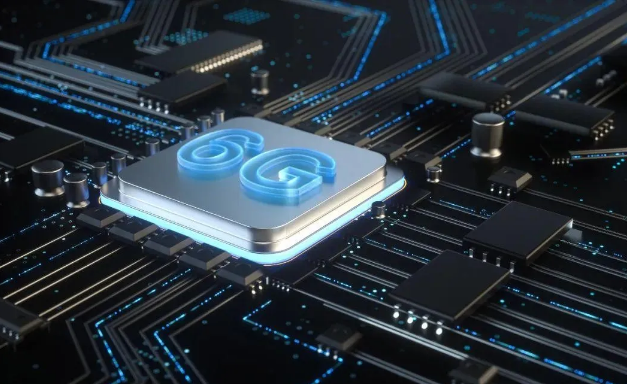
03 Potential research directions
Research on the next generation of mobile communications is inseparable from the discussion of new technologies and new network architectures. This chapter sorts out the current research focus of major organizations, universities and research institutions, and divides them into new spectrum, new wireless side technology and new The three categories of networking architecture and network capabilities mainly introduce the technical characteristics and the necessity of 6G-oriented systems, and provide a basic reference for subsequent more abundant and systematic research work.
3.1 New Spectrum
In the future, business types and users will become more diversified, and the requirements for network performance will become higher and higher. At present, low-frequency frequency resources have been gradually fully occupied. Therefore, extending to higher frequency spectrum will become the direction of 6G exploration, which is currently more popular. Spectrums of interest to the industry include the terahertz and visible light bands.
Terahertz refers to the frequency band from 100 GHz to 10 THz, with a wavelength range of 0.03~3 mm, electromagnetic radiation between radio waves and light waves, with rich information, sub-picosecond pulse width, and high spatiotemporal coherence , Low photon energy, strong penetrability, high safety in use, good orientation, and high bandwidth. Terahertz communication applications can be divided into two categories according to the coverage distance. The long-distance coverage applications include high-capacity wireless fronthaul/backhaul, wireless data centers, and space applications. The coverage distance is on the order of hundreds of meters to kilometers. Applications for short-range coverage include short-range point-to-point communications, chip communications, health monitoring, and nanoscale IoT, with coverage ranging from millimeters to meters. At present, the key issues in terahertz research are the development of core devices and flexible and dynamic air interface design.
The visible light band spectrum is 420~780 THz and the wavelength range is 380~780 nm. It can be used without authorization. Visible light communication has the advantages of combining lighting and communication, no electromagnetic interference, and green environmental protection. Therefore, VLC is a solution to close family intervention. It is considered to be an optional technology for future communication systems. The main application scenarios of VLC include indoor wireless access, indoor positioning, indoor navigation, intelligent transportation, application in aviation, data sharing between devices, high-speed information transmission, underwater communication, information security, etc., but the current visible light communication industry chain It is not mature enough, and the bottleneck lies in the visible light transceiver device of the mobile terminal.
3.2 New wireless side technology
3.2.1 Large Smart Surfaces
In the previous mobile systems, many wireless single technologies were devoted to better adapting to the changing wireless channel environment, using optimized transceiver design (such as waveform scheme, coding scheme, time-frequency space transmission mechanism, etc.) to improve system capacity. In the past, the control of electromagnetic waves was only limited to the transmitter and receiver. In recent years, the emergence of intelligent metasurfaces enables the electromagnetic characteristics of the channel environment to be flexibly controlled, which has attracted widespread attention in the academic and industrial circles. A smart metasurface is an artificial electromagnetic surface structure with programmable electromagnetic properties, usually composed of programmable novel metamaterials. Smart metasurfaces can actively and intelligently regulate electromagnetic waves through digital coding to form electromagnetic fields with controllable amplitude, phase, polarization and frequency. This mechanism provides an interface between the physical electromagnetic world of smart metasurfaces and the digital world of information science. The technical advantages of smart metasurfaces also include low energy consumption, low hardware cost, no self-interference, flexible configuration, and a wide range of applications. Application scenarios, real-time regulation of electromagnetic beams through reflection, transmission, scattering, etc., changes the wireless environment, and enhances the quality of useful signals, thereby achieving the purpose of enhancing coverage, increasing system capacity, and simplifying design, which is particularly attractive for the development of future mobile communications.
3.2.2 New codes and waveforms
During the evolution of the previous mobile system, the peak rate increased by more than 10 times from 4G to 5G. It can be predicted that the rate growth trend will remain or even accelerate to the next generation of mobile systems. The throughput of decoding needs to reach more than 100 Gbps, and the decoding algorithm and error correction code need to be redesigned to improve the parallelism of decoding. At the same time, the reliability requirements are also gradually increasing, and the coding is required to have a lower error level and optimize the relevant design. At present, the coding technologies that are more researched include Spinal coding technology, index modulation technology, and nonlinear precoding. At the same time, the use of artificial intelligence for coding has gradually attracted attention. In addition, in the 5G system, the waveform design can flexibly adapt to different application scenarios. In the future, the scenarios and services supported by 6G will be more complex, and the performance indicators will be greatly improved. The design and introduction of new waveforms is imperative. The current research includes non-orthogonal waveform design, transform domain waveform design and so on. New codes and waveforms will play an important role in future systems and are technical directions that need to be focused on.
3.3 New networking architecture and network capabilities
3.3.1 Integration of space, earth, air and sea
Satellite communications play a vital role in improving life in today's digital economy. Compared with terrestrial networks, satellite networks have complete earth surface coverage, advanced mobility, high security and reliability, and long-distance transmission delays. Guarantee, etc. Combining satellites, aircraft and ground networks to achieve interconnection between three-dimensional and heterogeneous networks can realize wide-range, large-capacity, and giant-connected information distribution and interaction, and meet limited rural area connections, airspace and sea connections, disaster management and other special scenarios. , to achieve global seamless coverage and non-sensing handover, and provide guarantee for the coverage and connection requirements of next-generation mobile communications. The technical challenges faced by the current technical system include high dynamic changes in transmission links, complex network spatiotemporal behavior, and large differences in heterogeneous business scales. technological breakthrough.
3.3.2 Deterministic Networks
Deterministic Networking (DetNet - Deterministic Networking) was originally a technology to help realize IP networks from "best-effort" to "punctual, accurate, and fast", and to control and reduce end-to-end delay. It is mainly aimed at vertical industries such as industry, energy, and the Internet of Vehicles that require extremely high network latency, reliability and stability. At present, the TSN standard formulated by IEEE provides the certainty of Ethernet, and the Deterministic Network Working Group established by IETF is committed to extending the technology developed in TSN to routers and expanding the network scale. In the future, as mobile terminals and the types of services they carry become more diverse, high-precision time synchronization, absolute end-to-end upper limit delay, ultra-reliable and zero-loss packet delivery and other "deterministic" requirements will become the next generation mobile systems. Require. The wireless side is the key to realize the end-to-end determinism of the mobile system. The wireless transmission is easily affected by the environment, and the transmission quality is difficult to guarantee. In the 5G era, the 3GPP standard has formulated a scheme for the integration of TSN and 5G. The 5G system is used as a TSN bridge, and the architecture is integrated in a black box manner. However, the two are still independent systems, and it is difficult to fully guarantee the performance of TSN. In the future, in the next-generation mobile communication system, the characteristics of services will be fully considered, so that 6G natively supports certainty, and related technical solutions and architecture systems need to be further improved.
3.3.3 Cloud Native
Cloud-native means that applications are deployed on cloud servers and have the characteristics of containerization, microservices, continuous delivery, and DevOps. These technologies can build a loosely coupled system that is fault-tolerant, easy to manage, and easy to observe. In the 5G era, the core network is based on a service-oriented architecture, which makes it easier to implement network functions using general-purpose servers, and achieve cloud-based effects in the data center. However, the current 5G core network deployment does not yet have the characteristics of containerization and microservices. In the future, in order to build flexible, scalable, rapid innovation and online network services, cloud native can be a suitable solution. Although the traditional wireless devices of the mobile network have always been highly closed and the network functions have extremely high requirements for real-time performance, the research and exploration on the cloud-native nature of the mobile network have been advancing. Give full play to its advantages to build a flexible and elastic new network architecture.
3.3.4 Ubiquitous Intelligence
The continuous boom of AI is revolutionizing every branch of technology, and combining AI with next-generation mobile networks has become an unstoppable trend. At present, the combination of communication field and intelligence mostly uses data collection and artificial intelligence algorithms to optimize services after the system is deployed, but the degree and scope of its application are relatively low. In the future, with the continuous evolution of the network architecture and the development of ubiquitous connectivity, artificial intelligence can be more closely integrated with every link of the network, not only deployed in the cloud, but also on the edge and terminal sides, not only for specific applications. The intelligent optimization of services will also be more widely integrated with system design, including network deployment, algorithm design, and computing power distribution, and will be more widely embedded in the network to achieve true ubiquity of intelligence and comprehensively improve future mobile network capabilities. .
3.3.5 Endogenous safety
In the future, new business visions and network architectures, including immersive XR, holography, ubiquitous connectivity of air-space-ground integration, AI, etc., will introduce more attack points and bring more challenges to security. The traditional security defense mode is a patch type, that is, after the system is built, it is a passive protection mode through isolated security design, stacking, and reinforcement, which is inefficient and uneconomical. Therefore, future mobile networks should explore new security models. Endogenous security is based on the attributes of cohesion, collaboration, and originality, so that security has the characteristics of original creation and symbiotic evolution. Through the aggregation of different security protocols and security mechanisms, the security governance of the network is carried out. At the same time, the security protection capability has an autonomous driving force to adapt to network changes synchronously or even prospectively, so as to derive the internal robust defense force of the network, which is no longer a concern for security. Passive response to threats can play an important role in future 6G networks.
04Summary
The 6G network is a network that will be oriented to 2030 and beyond. Although it is in the initial stage of research, it can still be seen from the evolution trend of services and technologies. The 6G network needs to support higher bandwidth and stricter certainty of future services. , wider and deeper coverage, and consider providing smarter, more secure, and more flexible network services. This paper sorts out the progress and potential technical directions of research institutions for 6G. Although the current 6G route is not clear, and the potential direction also has problems in theory, physical implementation, and networking, etc., with the continuous investment in scientific research and the continuous development of the industry Advance, I believe that the next generation of mobile communication system will bring more dimensional changes and deeper subversion!
references
【1】Dang S, Amin O, Shihada B, et al. What should 6G be? [J]. Nature Electronics, 2020(3): 20-29.
【2】Klaus D, Hendrik B. 6G Vision and Requirements: Is There Any Need for Beyond 5G? [J]. IEEE Vehicular Technology Magazine, 2018, 13(3):72-80.
[3] Yastrebova A , Kirichek R , Koucheryavy Y , et al. Future Networks 2030: Architecture & Requirements[C]// International Congress on Ultra Modern Telecommunications & Control Systems & Workshops. 2019.
【4】White paper.Key drivers and research challenges for 6G Ubiquitous wireless intelligence.2019
[5] Gao Fang, Li Mengwei. The University of Oulu, Finland, issued a white paper to initially put forward the vision and challenges of 6G [J]. Science and Technology China, 2019(12).
[6] Liu Junfeng, Liu Shuo, Fu Xiaojian, et al. Terahertz Information Metamaterials and Metasurfaces [J]. Journal of Radar, 2018.
[7] Liu Yang, Peng Mugen. 6G Endogenous Security: Architecture and Key Technologies [J]. Telecommunications Science, 2020(1):11-20.
【8】Zhang X, Wang J, Poor H V. Interference Modeling and Mutual Information Maximization Over 6G THz Wireless Ad-Hoc Nano-Networks[C]// GLOBECOM 2020 - 2020 IEEE Global Communications Conference. IEEE, 2020.
[9] Xie Sha, Li Haoran, Li Lingxiang, et al. A review of terahertz communication technology research for 6G networks [J]. Mobile Communications, 2020(6):36-43.
[10] Yu M , Tang A , Wang X , et al. Joint Scheduling and Power Allocation for 6G Terahertz Mesh Networks[C]// 2020 International Conference on Computing, Networking and Communications (ICNC). 2020.
【11】Li Xin, Wang Qiang. 6G research progress and application prospect of key candidate technologies [J]. Telecommunications Express, 2020, No.593(11):10-13.
【12】You X , Wang C X , Huang J , et al. Towards 6G wireless communication networks: vision, enabling technologies, and new paradigm shifts[J]. Sciece China. Information Sciences, 2021, 64(1).
【13】Chen S, Liang Y C, Sun S, et al. Vision, Requirements, and Technology Trend of 6G: How to Tackle the Challenges of System Coverage, Capacity, User Data-Rate and
12】You X , Wang C X , Huang J , et al. Towards 6G wireless communication networks: vision, enabling technologies, and new paradigm shifts[J]. Sciece China. Information Sciences, 2021, 64(1).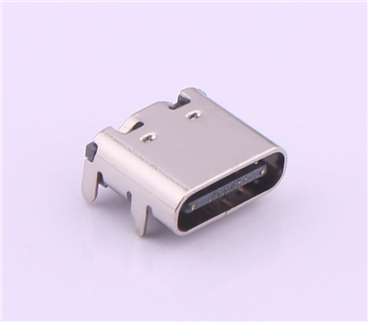






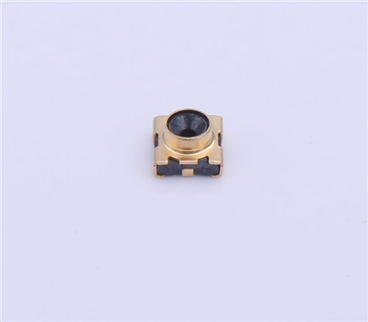
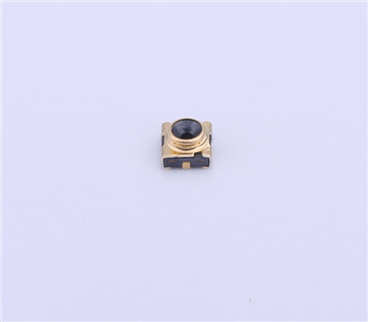
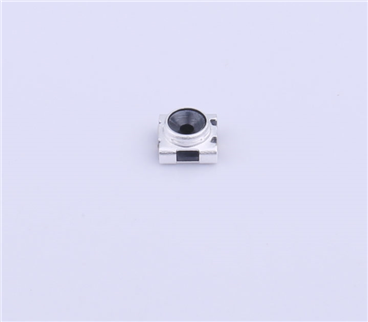
Copyright © Shenzhen Kinghelm Electronics Co., Ltd. all rights reservedYue ICP Bei No. 17113853